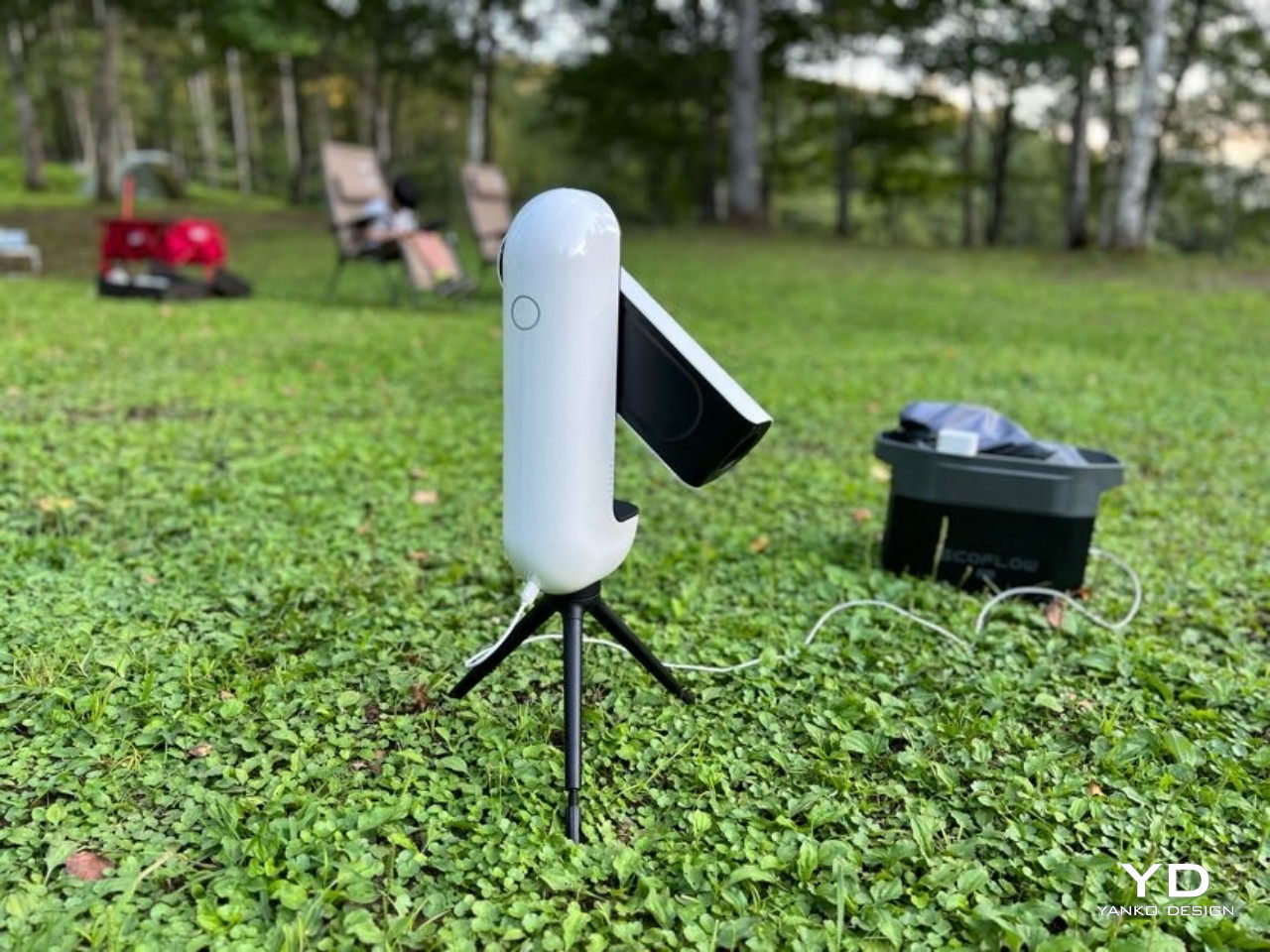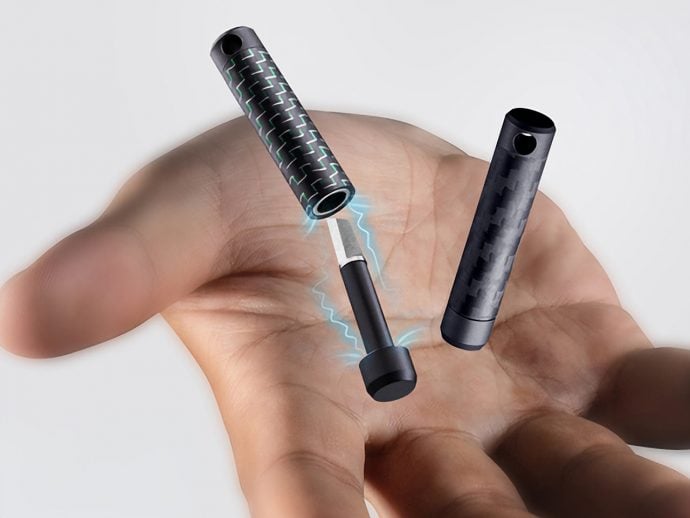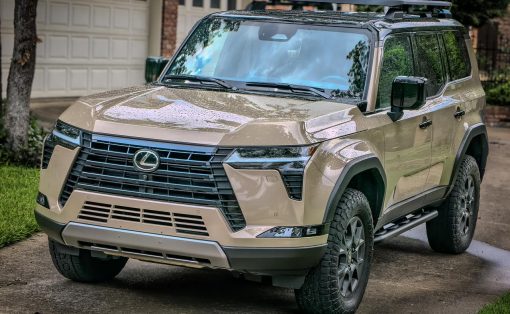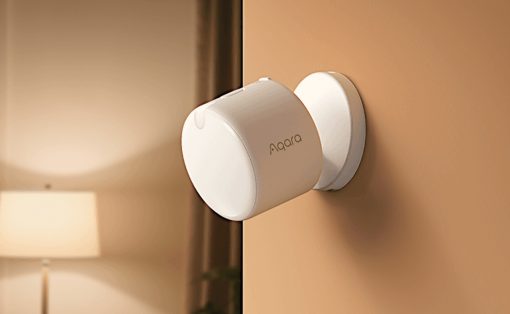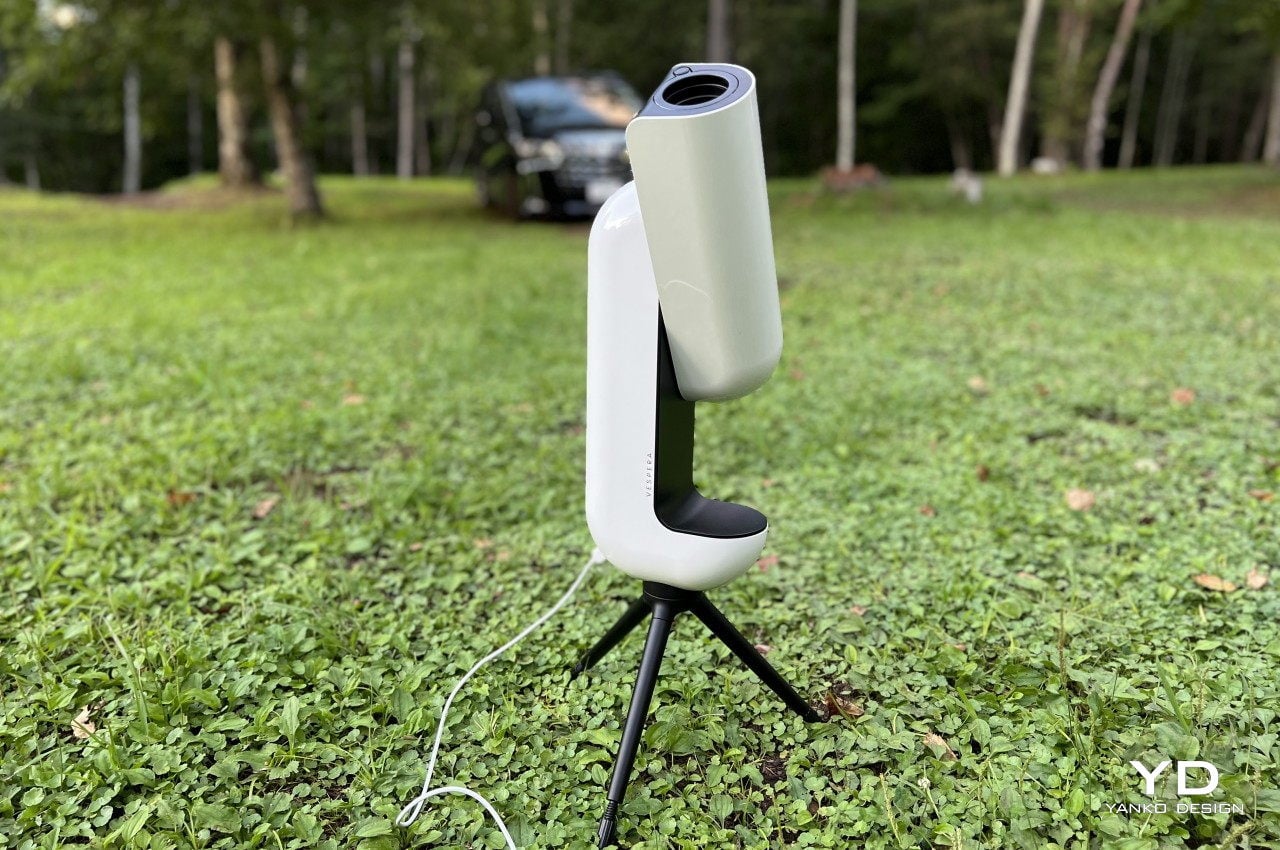
PROS:
- Simple, portable, and elegant design
- Easy to use, automated operation
- Impressive capture of night sky objects
- Can connect to 5 smart devices simultaneously
CONS:
- Expensive
- Limitations on viewing planet
The historic successes of companies such as SpaceX have put space travel and space exploration at the center of discussions once again. Along with those, however, is a resurgence of interest in the objects that we can see at night beyond just the moon. Astrophotography has become quite the trend that even smartphone companies are using that as a selling point for their cameras, like taking photos of the moon or star trails. While those might be impressive and fun for one-off shots, they can never compete with a more dedicated piece of equipment designed specifically for watching the night sky. Those, however, tend to be bulky and difficult to use, but smart telescope maker Vaonis is arguing that it shouldn’t be the case. The Vespera observation station promises a better way to see our planet’s distant neighbors, so we give it a spin to see if it can deliver.
Designer: Vaonis
Aesthetics
Vaonis doesn’t call the Vespera a telescope, and it definitely doesn’t look like one. Instead of the stereotypical long black tube, you are greeted by a sleek, ice-white shape that looks like a flattened egg or capsule. There’s a seam that goes down and the middle and to the right side, clearly indicating that this isn’t a unibody design.
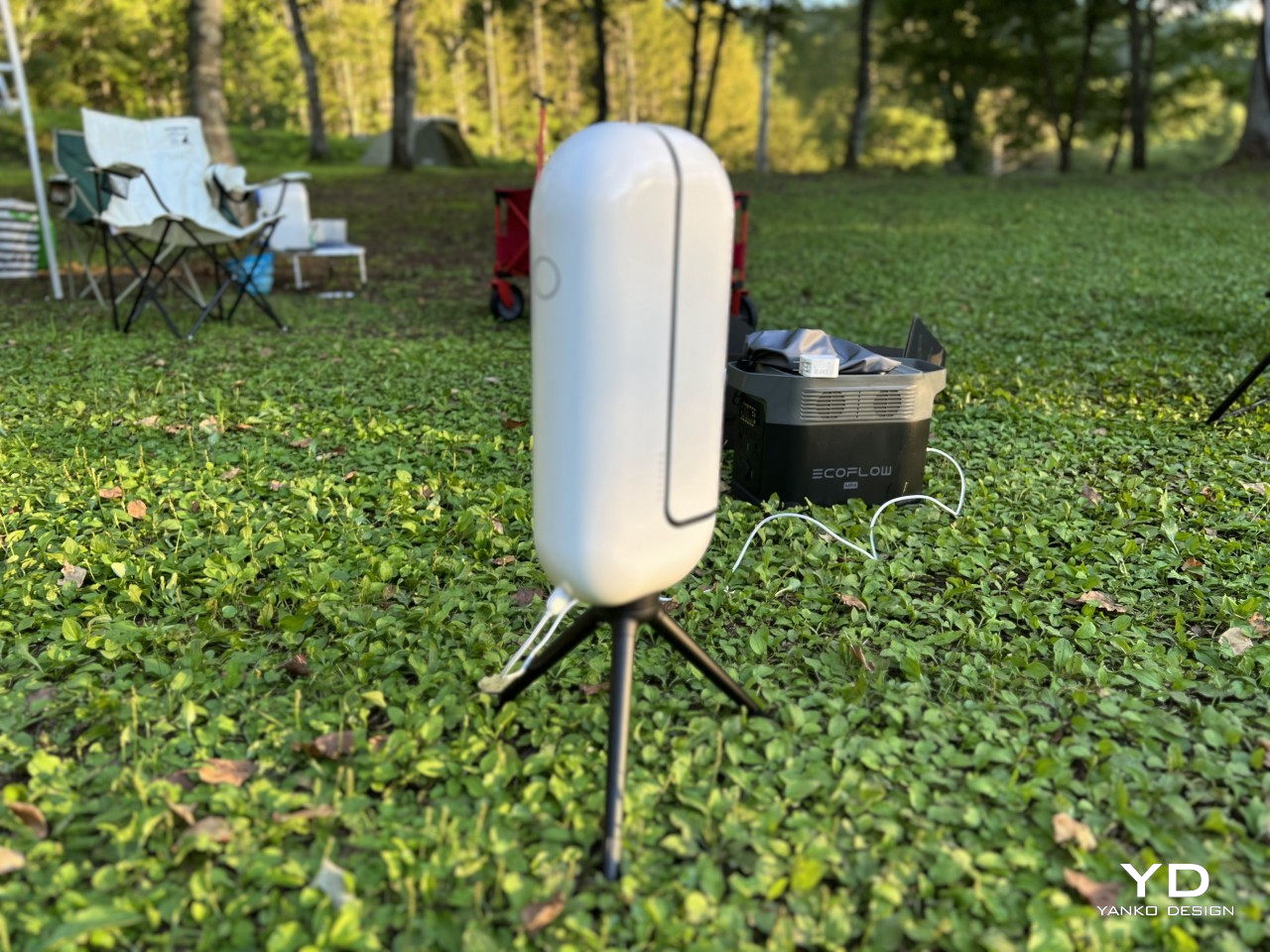
Aside from that rather odd shape and seams, there aren’t many things that will catch your attention on the surface of the observation station. There is a button on the left side, but it would have been nearly invisible if not for the LED ring surrounding it. It’s a pretty minimalist design, one that has very few distractions so that you’re left to focus not on the product but on its output via the Singularity mobile app.
Whether on its own or standing on the very short desk tripod, the Vaonis Vespera looks alien yet also alluring. Its unusual shape, at least for a “telescope,” its automated movement that we’ll see later, and its glossy white surface might even remind some of the props for sci-fi flicks and games. That’s not a bad association to make, and it’s a design that leaves quite a visual impact, one that makes you even more curious to discover what it’s capable of.
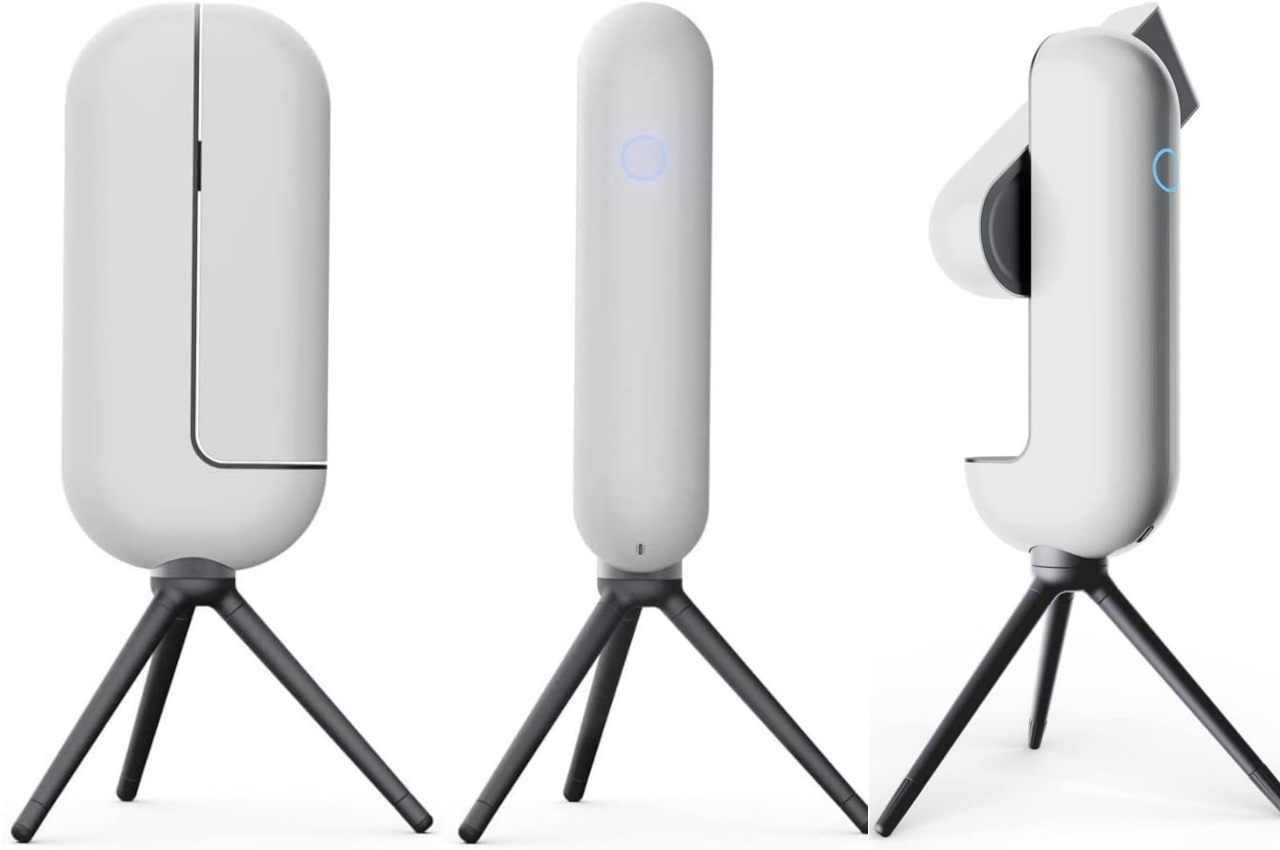
Ergonomics
The Vaonis Vespera’s simple yet attractive design is matched by its usability and portability. Using the astrophotography machine couldn’t be simpler, really. Simply set it down and push the button to turn it on. It creates a wireless network that devices can connect to and then it orients itself automatically without or with very little human intervention. You’ll see the telescope arm slowly rotate into place, pointing to the part of the night sky of interest, and that’s pretty much it. All you need to do is to tell it to start taking photos, and even how long it will run the exposure is automated depending on the object, its distance, or its clarity.
This ease of use might make you want to use the Vespera anywhere all the time, and its design definitely makes it possible as well. At only 11 lbs (5kg), it’s not that difficult to bring with you, whether in a car or even on your back with the optional backpack. Amateur telescopes are also meant to be portable to some extent, but the Vespera’s compact design makes it even more conducive to setting it up anywhere there’s a clear sky.
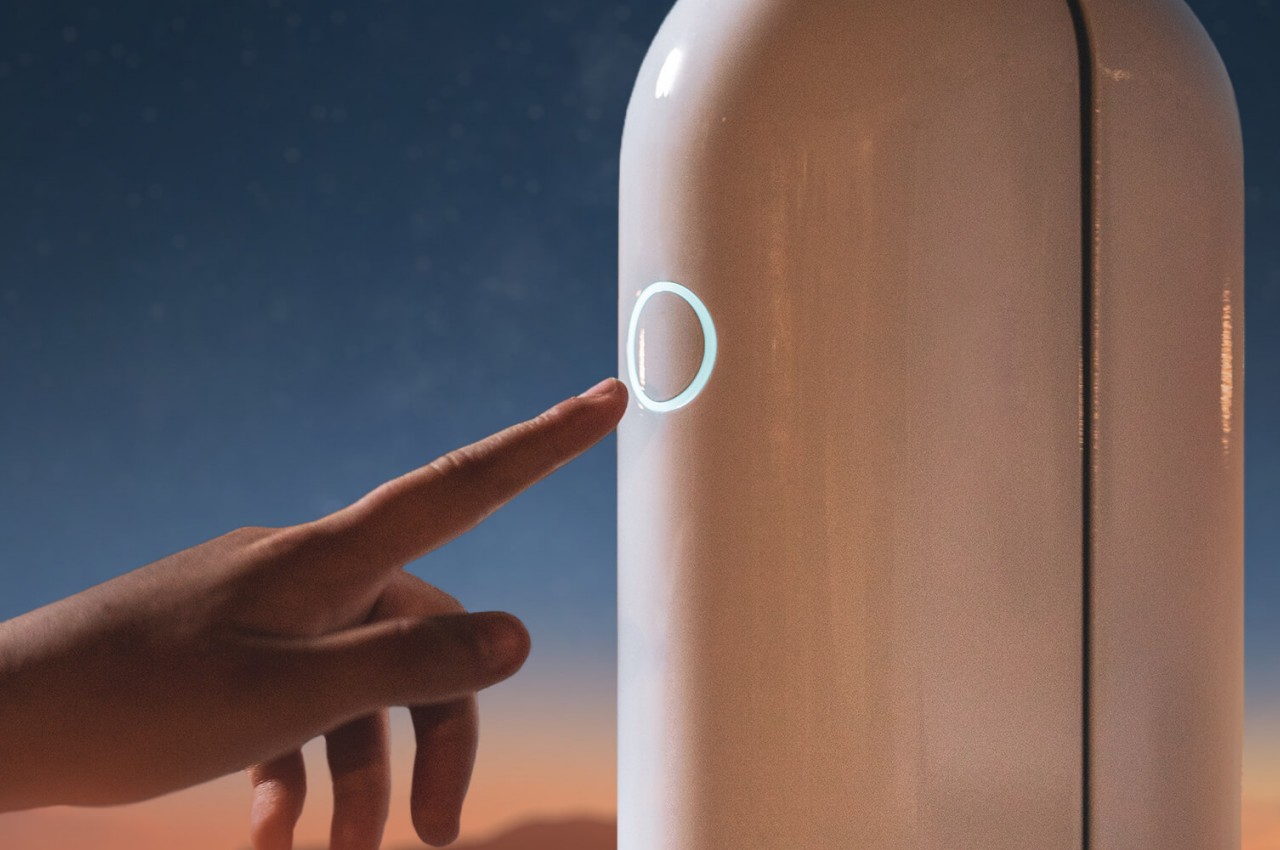
There is a bit of a caveat to that setup that does make the Vespera less ideal in some cases. The tripod it ships with is quite short and is best for using the observation station on top of a platform or, if preferred, close to the ground. If you prefer a higher perch, you’re going to have to order a separate one from Vaonis or, alternatively, look for a compatible alternative. There’s also a light pollution filter for urban astrophotographers and a solar filter for observing the sun, but these, too, are all separate purchases rather than something you can opt to buy all in one.
Performance
The reason why the Vaonis Vespera can’t be called a telescope, especially by pros and purists, is that there isn’t an eyepiece to speak of. Sure, the telescope arm does have a quadruplet apochromatic refractor with a 2-inch (50mm) f/4 aperture, but the light that it captures isn’t meant to go into your eyes but to a 2MP Sony STARVIX IMX462 CMOS camera sensor instead. In other words, the Vespera is a telescope and camera in one, a combination that has very important ramifications as far as the device’s usability and performance go.
As mentioned earlier, all you really need to do is to turn on the machine and you’re almost good to go. What happens behind the scenes is that it creates an ad hoc wireless network for your smartphone to connect to via the Singularity mobile app. Vespera then takes the GPS location from your mobile device and, using its internal maps of the night skies, orients and configures itself. All you really need to do is to tell it which nebula, galaxy, or star you want to take photos of and Vespera will automatically turn in that direction. It will even use the appropriate exposure time and settings depending on that night sky object so you don’t have to bother with the details. Of course, you still have complete manual control if you want to, but it is designed to be easy to use by default.
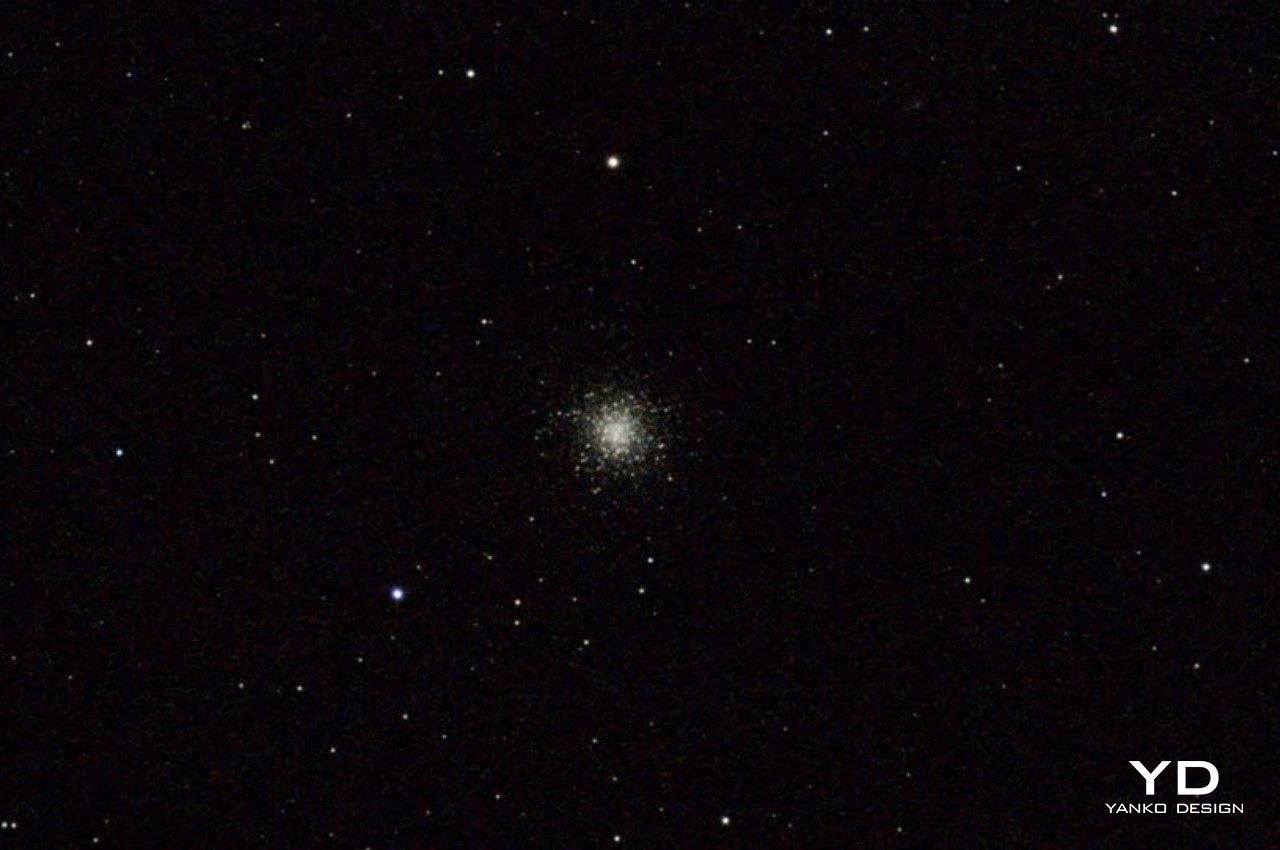
M13 (8 exp)
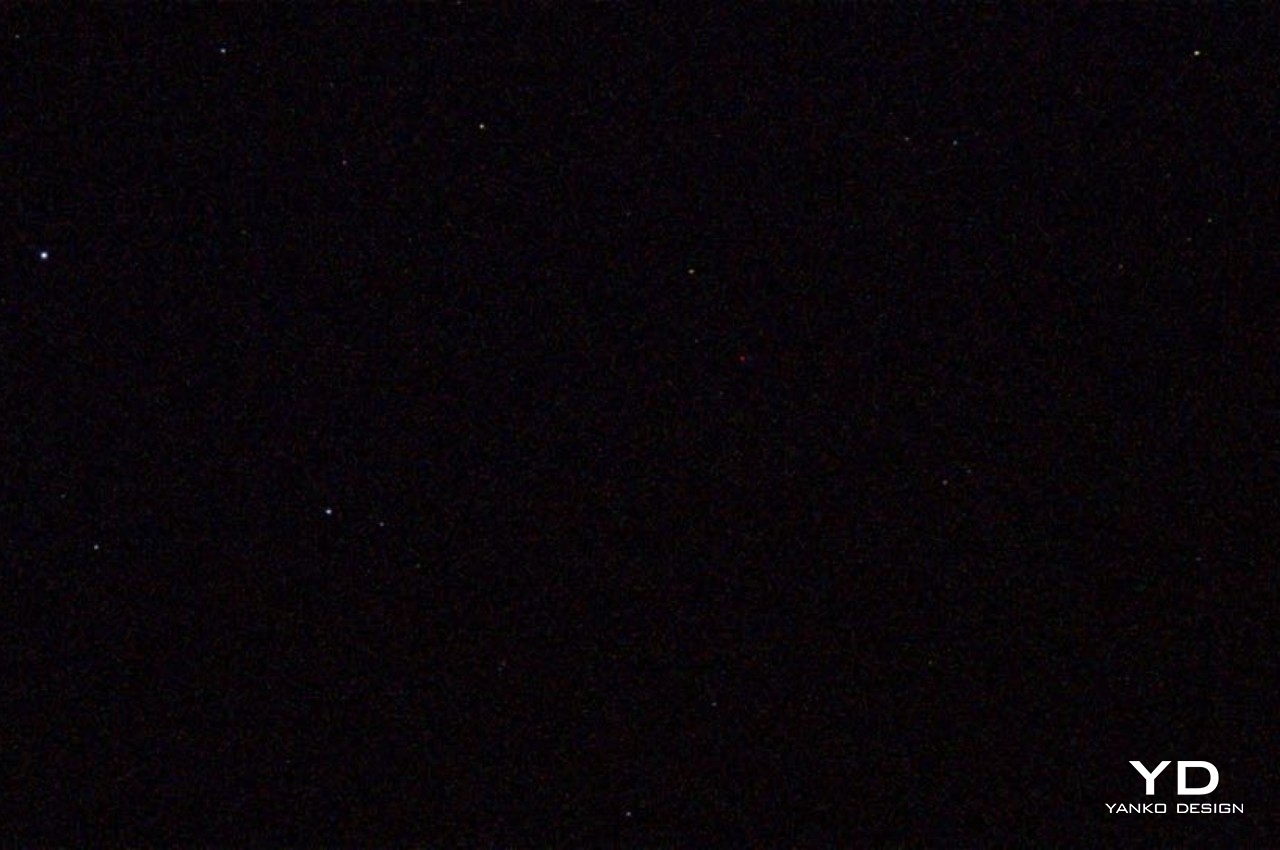
NGC7789 ()
Part of the magic of the Vaonis Vespera is that Singularity mobile app, which is pretty much your control center for the device and a gateway to learning more about the world above. It acts as the viewfinder for the observation station since there is no eyepiece, and you can see in real-time as it takes and stacks new images every 10 to 20 seconds until you get the best image for that particular celestial body. Depending on the visibility of that star, the process could take anywhere from half a minute to half an hour, so there might be times you would want to either manually set the timer or even cancel the process. If left on its own, however, Vespera is smart enough to track the object and adjust itself in order to compensate for the Earth’s movement.
The images that Vespera takes are quite impressive, though your results will naturally vary depending on atmospheric conditions. Admittedly, the 2MP 1920×1080 images won’t satisfy more discerning astrophotographers, but Vespera is pretty much marketed as a tool for beginners and casual users. If there’s one notable flaw that the observation station has is that its large field of view makes it less ideal for large and nearby space objects like planets or even the moon. For objects that are too big for the telescope, Singularity has a mosaic mode that joins exposures together to create a larger image than what is normally possible with its field of view. The disadvantage to this mode is that it can sometimes take hours to complete one panorama.
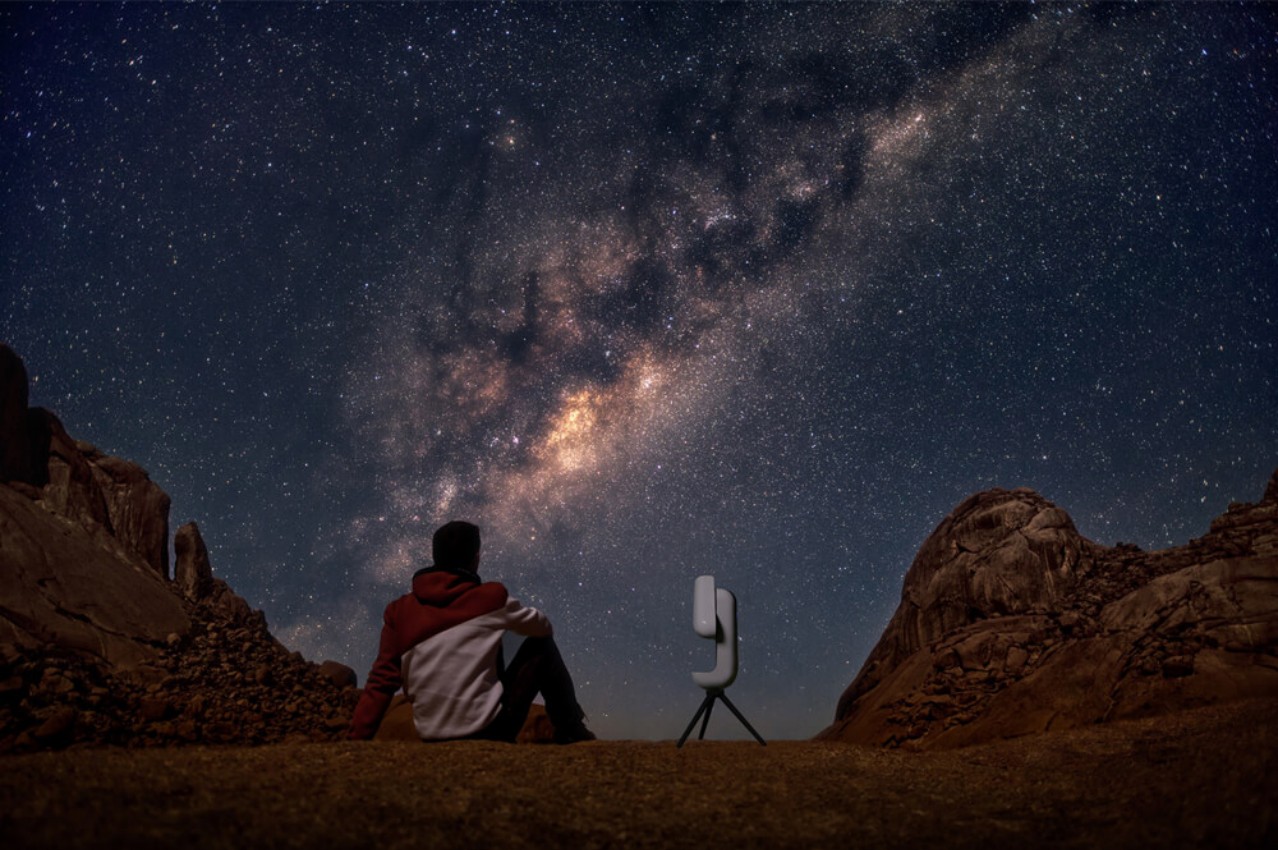
The Vaonis Vespera’s ease of use and portable design make it easy to use anywhere, though you’d most likely want to set it up away from bright lights and on a clear field. Fortunately, you can operate the observation station without having to plug it in, thanks to its built-in battery. It’s advertised for four hours of use, after which you’ll have to charge it again. Vaonis uses a proprietary magnetic connector for the charging cable, which can make it easier to connect but more difficult to find replacements when the cable goes bad. Either way, the 7,000 mAh battery is probably not going to be enough for a full night’s experience, so you might want to keep a large portable battery nearby.
Sustainability
Smart telescopes like the Vaonis Vespera are relatively young products, born from a desire to capture the heavens without having to become experts in the field. As with many young device manufacturers, creating a successful business is their topmost priority, and sustainability often takes a backseat to that. To its credit, Vaonis does recognize its responsibility to minimize the impact of its operations on the environment, but there’s not much information regarding concrete actions or the use of more sustainable materials.
In terms of the Vespera’s durability and repairability, there is that same level of uncertainty. The machine is IP43-rated, so it will survive a spray of water but not rain. Parts for this kind of device are also pretty uncommon, and the chassis design doesn’t lend itself to easy repairs. All in all, you will need to send the Vespera back to Vaonis for repairs, if you’re lucky to be in a country where such support is available.
Value
Even with the powerful cameras that smartphones now have, they can’t compare to having a telescope to really appreciate the beauty of outer space. At the same time, however, not everyone who’s interested in recording the stars in the sky might be willing to deal with the intricacies and hassles of operating professional equipment. They just want to take beautiful shots or learn more about the universe around them, working their way to becoming pros but also wishing for a gentler introduction to this almost mystical world.
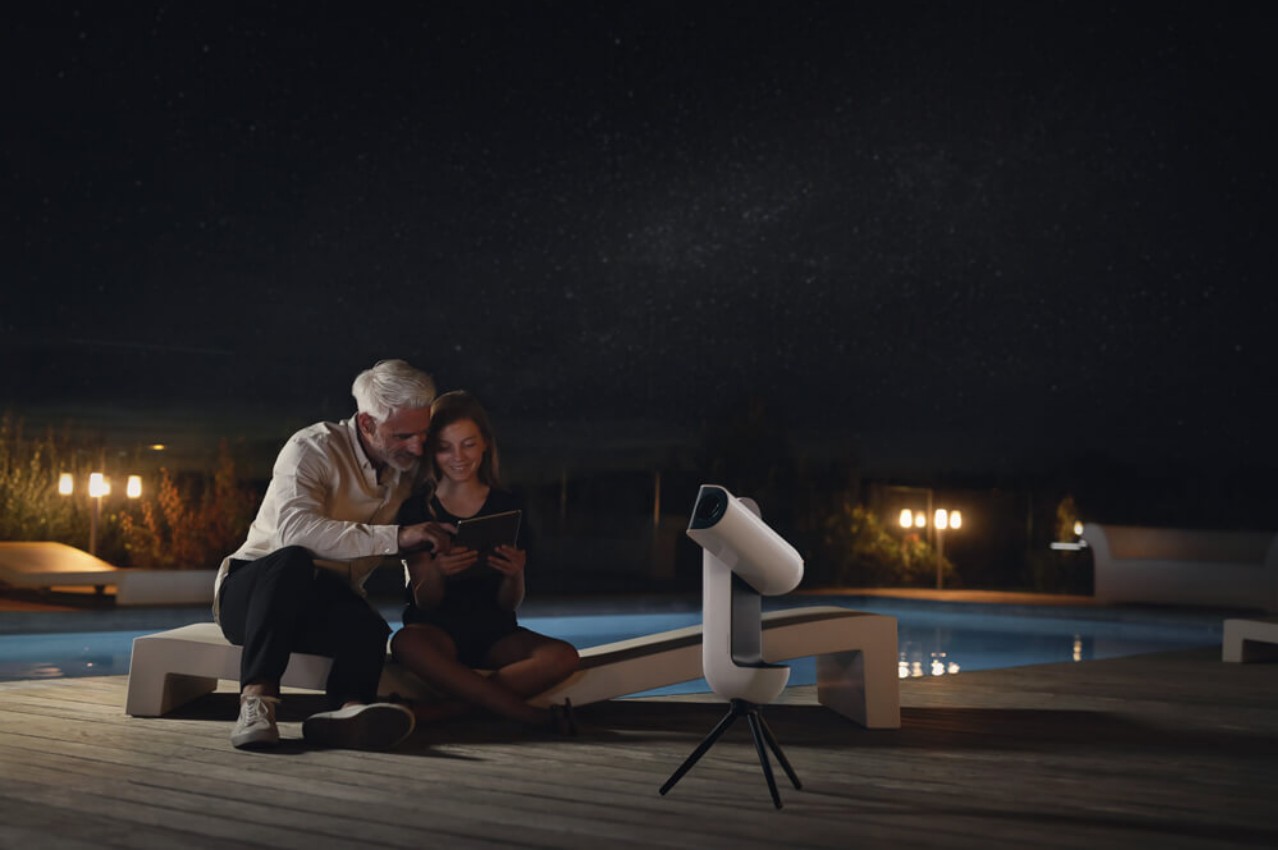
The Vaonis Vespera offers this kind of experience, designed to entice beginners or casual photographers to forego the ceremony and burden and just start taking images of galaxies, nebulae, and more. That said, its $1,499 price tag might sound beginner-unfriendly, but you’d be hard-pressed to find anything that offers that much convenience and capability in the same price range. Admittedly, the image quality, while decent, is hardly at the top of its class and will probably dissatisfy more seasoned stargazers. Then again, they aren’t Vespera’s target audience, and Vaonis does have other products to cater to these astrophotographers.
Verdict
People have thankfully become more aware and appreciative of the world around them, whether it’s enjoying the great outdoors or being enchanted by the stars in the sky. For the longest time, watching heavenly bodies has been an activity reserved for more knowledgeable professionals and far out of reach of regular people. The trends are trending, fortunately, and the Vaonis Vespera is paving the way.
The observation station, a combination of telescope and camera, has a simple and elegant design that belies the power it hides inside. That power, however, is delivered in a manner of operation that is as easy as using a mobile app. Granted, the portable machine is on the pricey side, and the photos it takes won’t win awards. But if you’re the kind of celestial explorer who loves to learn and discover new things every night, the Vaonis Vespera will help you have an effortless and fun journey, each and every time.
